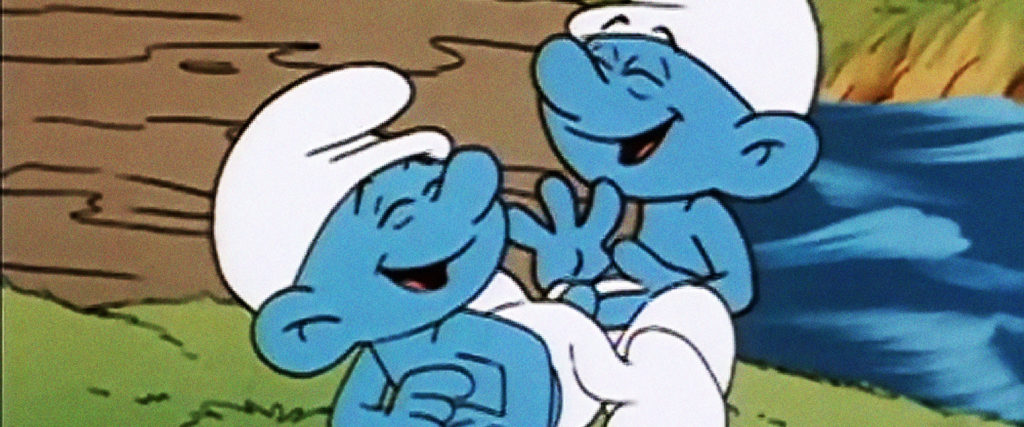There’s a storybook village that houses an insular group of unique men. These three-inch guys trapeze around town shirtless, wearing pristine white caps and matching slacks. They have big hands and even bigger feet. They have just one characteristic, and it defines their personality.
No, I’m not talking about Fire Island gays. I’m talking about Smurf Village.
But consider the fictional village’s real-life counterpart: the barrier island along the Long Island shore whose leafy forest homes are a longtime summer refuge for predominantly gay men. On Fire Island, they’re free to live their fullest, wildest fantasies, away from conservative families and traditional city-dwellers. Over the years, though, Fire Island has come to epitomize the limitations of the queer experience: a place dominated by conventionally attractive, physically fit cisgender men. This critique surfaced again in July when widely shared photos showed gay man packed like sausages at the beach, seemingly ignoring the global pandemic for the sake of fun.
While some saw a group of shirtless men disregarding social-distancing guidelines, I saw a bunch of Smurfs. You can’t tell me these two photos don’t look eerily similar.
Clearly, this is the time to resurface — and confirm — a long-held theory: Smurfs are gay.
Since the late-1950s when the Belgian comic series The Smurfs debuted, fans have often wondered if the little pristine blue guys are coded as gay. “With the exception of Smurfette, the Smurfs are all short blue males in clean white pants and conical hats who choose skipping as their main mode of transportation,” the Daily Beast reported in 2010.
The most damning evidence that Smurfs are all gay is their treatment of the single heterosexual female in the bunch, Smurfette. Her origin story is told in the 21st episode of the original 1981 cartoon. Created by the villainous wizard Gargamel, she descends upon Smurf Village as a spy, sowing resentment and jealousy among blue short kings.
Hefty Smurf stumbles upon her crying on a mushroom cap in the forest. She introduces herself with a sultry wink and a pose, asking, “Do you like what you see?” Hefty replies, “I don’t know.”
Smurfette then plays innocent, asking to be carried. Hefty reluctantly agrees, picking her up and tossing her over his shoulder. He’s clearly unsmitten with the first woman to ever step foot in Smurf Village.
To win over the town of blue twinks, Smurfette throws a party. However, Hefty, Harmony, Vanity and a cadre of other Smurfs all turn down the invite. Even the wise and caring Papa Smurf turns them down, citing “work” in his lab. He knows there is nothing quite as gay as thinking you’re better than an event.
Eventually, we learn of Smurfette’s evil-doing. Papa Smurf forgives her and turns her into a real Smurf. She undergoes a transformation from homely, moralistic temptress to the seductive, colorful goddess we’ve adored for over 40 years.
It’s fitting she’s voiced in the 2011 film The Smurfs by Katy Perry, who started her career as Christian singer Katheryn Hudson before becoming the confectionary California girl. The Smurfs are gagging over a literal goddess carved from clay. That’s some true gay adoration.
Overt sexuality is largely avoided in the series, though at times certain Smurfs do fall for Smurfette — so we’re left to wonder. Even if the Smurfs aren’t actually gay, they’re coded as such. Just look at some of their names: Natural, Dabbler, Stinky, Lumberjack, Smooth and Painter. Ya, those are some serious gay tribes.

